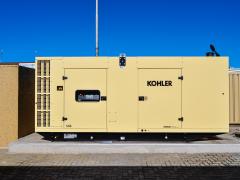Clear skies and mild temperatures make South African winters seem ideal for solar generation. But, as more home owners are discovering, solar performance can dip unexpectedly in cold months. Without seasonal adjustments, even well-designed systems may underperform, says Rein Snoeck Henkemans, CEO of Alumo Energy.
Sunlight reaches panels at a lower angle in winter, daylight hours are shorter and early morning temperatures often fall into single digits. These factors reduce generation time and battery performance, making winter a stress test for solar setups.
Photovoltaic systems only begin operating once solar irradiance reaches the panel inverter’s activation voltage. Researchers at the Vaal University of Technology found that panels generated usable energy for around 4,7 hours a day in April, dropping to 4,4 hours by mid-July. That’s less than 20% of the day.
Battery performance also drops in the cold
Lithium-ion batteries are particularly sensitive to temperature. Below 0°C, internal reactions slow down, reducing usable capacity and starting the next discharge cycle at a disadvantage. While most of South Africa avoids freezing conditions, isolated areas do see cold enough nights to affect performance.
Checking cabinet temperatures at dawn is beneficial. If the sensor reads in single digits, insulation or, in rare cases, active heating may be needed. Charging should be scheduled for early afternoon when ambient temperatures are higher and systems should retain a 40% buffer to avoid full discharge overnight.
Smart settings and usage timing boost winter performance
Software plays a critical role in performance. An inverter’s firmware determines charge and discharge behaviour, and minor updates can extend battery life and improve winter efficiency. These changes are often included in solar maintenance packages and can be done remotely.
Well-installed systems should operate reliably across the year but seasonal adjustments can improve savings, efficiency and longevity. With winter presenting unique challenges to generation and storage, small changes in system settings and usage patterns can deliver meaningful results.













